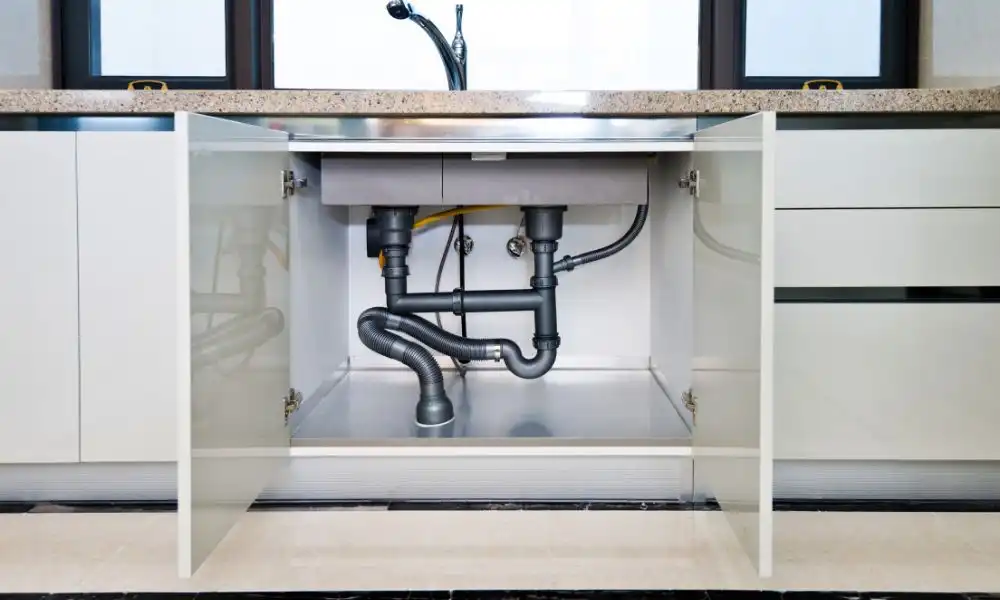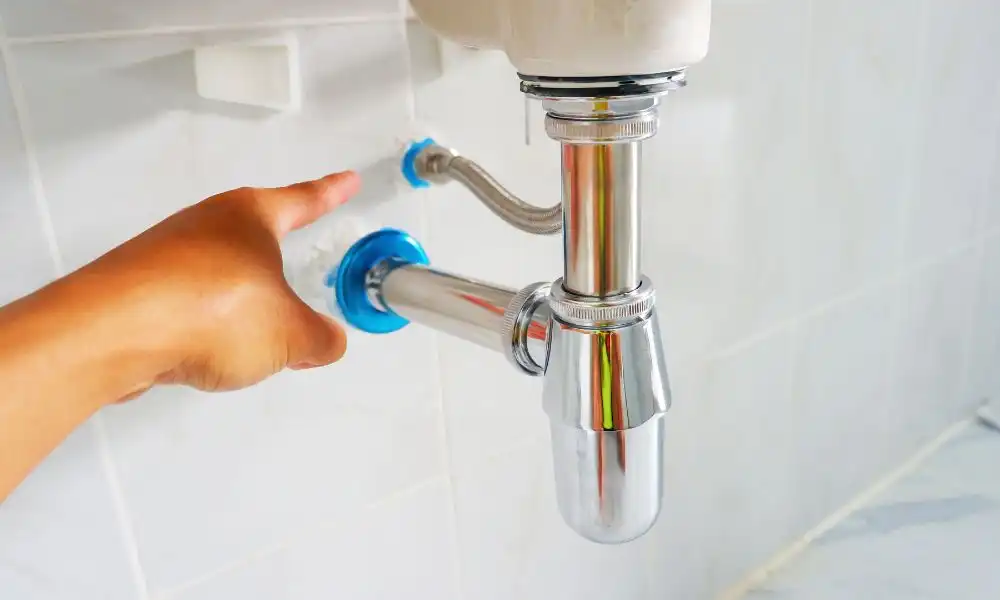If your kitchen faucet is loose, it may be time to tighten it. A loose faucet can cause water to flow slowly or not at all, making it difficult to wash dishes or take a shower. There are a few different ways to tighten a kitchen faucet: by using a wrench, by using the handle, or by using the cartridge. Whichever method you choose, be sure to hold the faucet firmly while tightening the screw or nut.
What Is A Kitchen Faucet

A kitchen faucet is a plumbing fixture used in a house or commercial building for supplying water. They come in many different styles and shapes to ensure compatibility with any sink or countertop. Most kitchen faucets have an on/off switch, a spout height adjustment, and spray control. Some models feature an integrated water filter.
Tips For Keeping Your Kitchen Faucet Tight

Keep your kitchen faucet tightly tightened to avoid water spilling and messes. Here are three easy tips to keep your faucet tight:
- Use a wrench to tighten the nut on the back of the faucet.
- Wrap a cloth band around the circumference of the spout and use a hammer to hit it in several spots until it is snug.
- Attach rubber washers (if available) between the faucet and mounting bracket.
Remove Everything From Under The Sink

Do you have a clogged kitchen sink that’s preventing water from flowing freely? If so, it may be time to loosen the faucet’s hose by removing everything from under the sink. This can help clear the obstruction and restore proper water flow. Here are instructions on how to do it:
- Turn off the water supply to your kitchen sink by turning off the main valve in your home or office.
- Locate and turn off the faucet’s cold water supply line by locating its shut-off valve and turning it off.
- Grab a pair of pliers and unscrew the metal washer located on top of the faucet handle (see photo).
- Remove the old washer and replace it with a new one, making sure to tighten up the nut using pliers.
Turn Off The Water Valves

One of the most common problems with older homes is that the water valves can become loose over time. This can cause the water to come on and off erratically, making it difficult to clean up spills. To fix this problem, you’ll need to tighten the valve stem. Here’s how:
- Turn off the water supply to your home by turning off the main valves in the distribution system.
- Find the valve for your kitchen sink and turn it off.
- Reach up behind the sink and locate the metal valve stem nut. It will likely be a tight fit, so use a wrench or pliers to tighten it slightly (a few degrees should do it).
- Reconnect your kitchen faucet and turn on the water. If everything works OK, you’re done!
See More: How To Build An Outdoor Kitchen With Wood Frame
Slide Under The Sink On Your Back

There is no need to be alarmed if you see a small black object sliding under your kitchen sink – it’s just a slide-under faucet. Tighten the screw on the side of the faucet until it’s tight, and you’re good to go.
Use A Wrench

If your kitchen faucet is not tight, it could be due to a worn-out washer. A broken or loose faucet handle is another common culprit. If the faucet handle is loose, you can tighten it by using a wrench. To do this, first, turn the water off at the main supply and disconnect the hose from the faucet. Use a wrench to twist the handle counterclockwise until it’s tight. Reconnect the hose and turn on the water to test for leaks.
See More: How To Remove A Kitchen Faucet
Use Pliers

If your kitchen faucet is loose, you can use pliers to tighten it. First, locate the nut that holds the faucet stem in place. Use a wrench to turn the nut clockwise until it’s tight. Repeat this process on the other side of the stem.
Use A Pipe Wrench

Using a pipe wrench to tighten the kitchen faucet is an effective way to avoid expensive repairs. By tightening the faucet handle using a pipe wrench, you can prevent it from leaking and keep your sink or countertop from becoming wet.
Tighten The Nut

The kitchen faucet is a common fixture in most homes. It’s important to keep it tight so that it doesn’t loosen over time and cause flooding or other problems. Here are a few tips for tightening the nut on the faucet:
- Use a wrench to tighten the nut in a crisscross pattern.
- Protect your hands with work gloves if possible.
- Apply pressure to the wrench while turning the nut.
- Don’t over-tighten the nut, as this could damage the faucet assembly.
Check That Faucet Base Is Tight

If your kitchen faucet is dripping, it might be because the base is not tight. Check that the screw on the base is tightened and make sure the washer is in place. If these measures do not fix the problem, you may need to replace your faucet.
See More: How To Install Crown Molding On Kitchen Cabinets
Turn The Water Back On And Replace Everything That Lives Under The Sink

If your kitchen sink’s water has been turned off for an extended period of time, it’s important to turn the water back on and replace any items that live under the sink. This includes anything from faucets to drain plugs. By doing this, you’ll ensure that all of your plumbing is functioning properly and there are no leaks.
Why You Need To Tighten Your Kitchen Faucet

If your kitchen faucet is loose, it could be a sign that something is wrong with it. A loose faucet can easily drip water onto the floor, making a mess and potentially leading to mold or other health hazards. Here are some tips to help you tighten your kitchen faucet:
1. Turn off the water supply to the faucet by turning the main valve to the “off” position.
2. Remove any aeration filters from under the sink by unscrewing their caps and dropping them into a trash can. This will help rid the pipes of debris that can cause a faucet to become loose.
3. Look for Washers – Oftentimes there are washers included with a new faucet that you can use to tighten it up if needed.
Quick Tips To Tighten Your Kitchen Faucet

If your kitchen faucet is not as tight as it could be, you may want to take some quick measures to tighten it up. Here are a few tips to help:
- Use pliers: If your faucet doesn’t have a built-in wrench, you can use pliers to turn the adjustment screw until it’s snug. Be careful not to overdo it and strip the screw.
- Wrap a cloth around the handle: This will keep your hands from getting wet and will also provide insulation against cold water pipes.
- Use a crescent wrench: A crescent wrench is similar to pliers but has an extra wide head that makes it easier to turn screws. It’s also good for removing screws that are difficult to reach with regular pliers.
How To Tighten A Kitchen Faucet By Hand

Tightening a kitchen faucet by hand is an easy way to keep it functioning properly. Here are 8 simple steps:
- Turn the faucet handle all the way to the left or right until you feel resistance.
- Apply pressure to the handle while turning it in a circular motion. Continue turning until you hear a “click” indication that the faucet is securely tightened.
- Allow the water to flow for 30 seconds before fully operating the faucet again to ensure proper seal and performance.
How To Tighten A Kitchen Faucet With A Wrench

If your kitchen faucet is loose and not giving a satisfying stream of water, you can tighten it with a wrench. Follow the steps below to tighten your kitchen faucet using a wrench:
- Turn the faucet handle all the way to one side. This will loosen the head of the faucet from its stem.
- Take the wrench and unscrew the head of the faucet from its stem. Be careful not to lose any of the parts!
- Put together the head of the faucet and screw it back onto the stem. Tighten it by turning it counterclockwise with a wrench.
- Turn on the water to fill up your sink and test that your faucet is properly tightened by turning it anticlockwise and then clockwise.
Conclusion
Tightening the kitchen faucet can help keep it from leaking and make it easier to use. If you have a leaky faucet, tighten the screws until they are tight but don’t overdo it. You may need pliers to help with this process. Over-tightening can cause the faucet to break.





